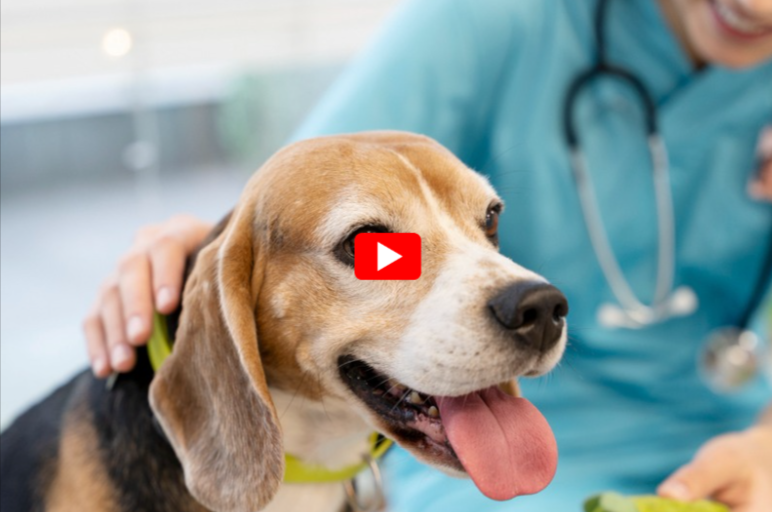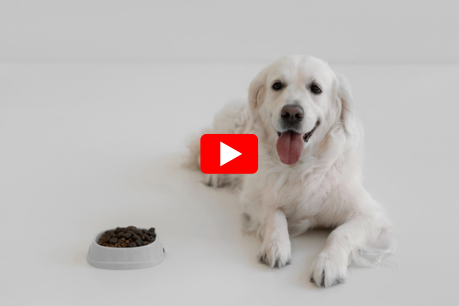Sebaceous Cyst Dog: Causes, Signs, Treatment & Care Guide
Dogs are susceptible to various skin conditions, from allergies to tumors. One of the most common — yet often misunderstood — issues is a sebaceous cyst.
A sebaceous cyst in dogs is a non-cancerous lump filled with sebum under the skin. They’re usually harmless but may need removal if infected or ruptured.
While these lumps are generally harmless, they can sometimes cause discomfort, infection, or cosmetic concerns for pet owners.
In this guide, we’ll walk you through everything you need to know about sebaceous cysts in dogs — what they are, why they happen, how to recognize them, treatment options, and how you can care for your pet at home.
📖 What is a Sebaceous Cyst in Dogs?
A sebaceous cyst is a small, non-cancerous, sac-like bump filled with an oily, white, or yellowish substance called sebum.
Sebum is a natural oily secretion produced by the sebaceous glands to lubricate and protect the skin and hair. When a hair follicle or sebaceous gland becomes blocked or damaged, this sebum builds up, creating a cyst.
They can appear anywhere on your dog’s body but are most commonly found on the head, neck, torso, and upper legs. These cysts can vary in size — from a small pimple-like bump to a larger, noticeable lump.
📖 What Causes Sebaceous Cysts in Dogs?
Sebaceous cysts can develop for several reasons, and while they’re usually benign, understanding the underlying cause is essential for preventing recurrences.
Common Causes Include:
- Blocked Hair Follicles: Often from dirt, debris, or oil build-up.
- Skin Trauma: Cuts, scratches, or insect bites causing glandular blockage.
- Genetic Predisposition: Certain breeds like Cocker Spaniels, Poodles, and Schnauzers are more prone.
- Hormonal Imbalances: Thyroid or adrenal issues may contribute.
- Skin Infections: Bacterial or fungal infections can lead to cyst formation.
- Aging: Older dogs tend to develop skin irregularities more frequently.
📖 Symptoms of Sebaceous Cysts in Dogs
Sebaceous cysts can be subtle and painless initially but may cause problems if they become infected or rupture.
Typical Signs Include:
- A small, raised bump under the skin.
- Smooth or slightly irregular surface.
- White, yellow, or bluish color under the skin.
- Oozing of a thick, cheese-like substance when ruptured.
- Inflammation, redness, or tenderness if infected.
- Possible hair loss over the bump.
They usually don’t cause discomfort unless they burst, become inflamed, or get infected.
📖 Are Sebaceous Cysts Dangerous for Dogs?
In most cases, sebaceous cysts are benign and harmless. However, if left untreated, they can rupture, become infected, and cause significant pain, swelling, and secondary skin issues.
Complications Can Include:
- Infections requiring antibiotics.
- Abscess formation.
- Recurrence if not properly removed.
- Rare cases of malignancy misdiagnosed as a benign cyst.
Hence, any unusual lump should be evaluated by your vet to rule out more serious conditions like tumors or cancerous growths.
📖 Diagnosis of Sebaceous Cysts in Dogs
Your veterinarian will typically perform a physical examination and may recommend additional tests to confirm the diagnosis:
- Fine Needle Aspiration (FNA): Collects a sample of the cyst’s contents for microscopic examination.
- Skin Biopsy: A small tissue sample may be taken to rule out malignancy.
- Cytology or Histopathology: Helps differentiate between a benign cyst and other skin growths.
In most cases, sebaceous cysts are straightforward to diagnose, but these tests ensure accuracy and peace of mind.
📖 Treatment Options for Sebaceous Cysts in Dogs
Treatment depends on the cyst’s size, location, and condition (infected, inflamed, or benign).
Leave It Alone
If the cyst is small, painless, and not causing issues, your vet may recommend simply monitoring it.
Surgical Removal
The most definitive treatment involves surgically removing the cyst and its sac to prevent recurrence. This is typically done under sedation or anesthesia.
Surgery is recommended if:
- The cyst is infected.
- It frequently ruptures.
- It causes discomfort.
- It grows rapidly.
Drainage
In some cases, a vet might lance and drain the cyst. However, this often provides temporary relief as the cyst sac remains intact and may refill.
Antibiotics and Anti-inflammatories
If the cyst is infected, your vet may prescribe antibiotics or anti-inflammatory medications to reduce swelling and prevent systemic infection.
📖 Can You Treat Sebaceous Cysts in Dogs at Home?
While at-home management is not a substitute for professional care, you can help keep your dog comfortable and prevent complications.
Home Care Tips:
- Keep the area clean and dry.
- Apply a warm compress for 5-10 minutes daily to promote natural drainage.
- Use a vet-approved antiseptic rinse if the cyst ruptures.
- Avoid squeezing or popping the cyst at home — this can worsen the condition or cause infection.
- Regular grooming to prevent clogged hair follicles.
If the cyst changes in size, color, or behavior, consult your vet immediately.
📖 Can Sebaceous Cysts Be Prevented?
While you can’t completely prevent sebaceous cysts, good skin and coat care can reduce the risk.
Prevention Tips:
- Regular grooming to remove debris and loose hair.
- Routine vet check-ups for early detection.
- Addressing skin allergies or infections promptly.
- Maintaining a balanced diet for healthy skin.
- Avoiding harsh shampoos or chemicals on your dog’s skin.
📖 When to See a Veterinarian
Consult your vet if:
- The cyst rapidly increases in size.
- It becomes red, inflamed, or painful.
- It ruptures and leaks pus or blood.
- There’s hair loss or excessive licking around the lump.
- Your dog shows signs of discomfort or behavioral changes.
Early veterinary intervention prevents complications and ensures your dog’s ongoing comfort and health.
📖 Sebaceous Cyst vs Tumor in Dogs
Sebaceous cysts can sometimes mimic the appearance of other, more serious skin growths such as tumors. Here’s how to tell them apart:
| Sebaceous Cyst | Tumor |
|---|---|
| Usually soft and movable | May be firm or fixed |
| Grows slowly | Can grow rapidly |
| Non-cancerous | May be benign or malignant |
| Oily or cheesy discharge | No discharge unless ulcerated |
| Often on the skin’s surface | Can occur deeper in tissue |
Only a vet can definitively diagnose a lump, so any new growth should be evaluated.
📖 Final Thoughts
Sebaceous cysts in dogs are common, generally harmless skin growths that many pet owners will encounter at some point.
While they’re often nothing to worry about, it’s essential to monitor these cysts and seek veterinary advice when necessary.
With good skin hygiene, routine check-ups, and prompt treatment when needed, you can help keep your furry friend comfortable and healthy.
📚 References
- Sebaceous Cyst
https://en.wikipedia.org/wiki/Sebaceous_cyst
- What Is a Sebaceous Cyst?
https://www.healthline.com/health/sebaceous-cyst
- Epidermoid Cysts
https://www.mayoclinic.org/diseases-conditions/broken-ribs/symptoms-causes/syc-20350763
.



